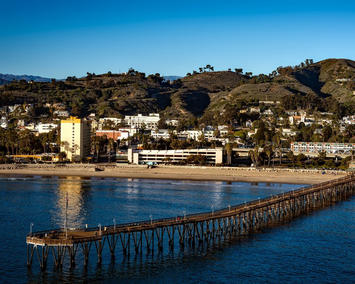
In a rare and commendable display of political courage and common sense, California Governor Gavin Newsom has been working to finally grant permits to construct a second major seawater desalination plant on the Southern California Coast.
But don’t count on this new water source just yet. Despite clearing major hurdles, self-described environmentalists and their allies in the media haven’t surrendered.
The Los Angeles Times is doing everything it can to derail the project. In a February 26 article, the Times reports that “environmentalists” have serious concerns about the proposed plant, set to be constructed in Huntington Beach and using a design similar to one already successfully operating about 60 miles south in Carlsbad. There’s just one thing: in a supposedly objective look at the Huntington Beach plant, the only sources quoted are self-declared environmentalists opposed to the plant.
Here are some of the problems those purported environmentalists have with the proposed desalination plant in Huntington Beach. Quoting from the LA Times article:
“Though the Huntington Beach facility meets the state goal of diversifying California’s water supply, it would undermine other environmental policies. The plant would require large amounts of electricity; it would sit next to a rising sea; and it would continue the use of huge ocean intakes harmful to microscopic marine life.”
These objections are easily answered.
First, the construction of anything in California, though approved by one agency, will be opposed to multiple others. This is the dystopian nature of California’s self-contradictory and destructive regulatory environment.
Second, every drop of water that is produced by the plant is water that does not have to be transported from reservoirs in Northern California, at an energy cost that rivals that of desalination.
Third, even the most aggressive projections of sea-level rise would not affect operations of the Huntington Beach plant, and even if some adaptations eventually were necessary they would be part of a larger project to protect the Southern California coast.
Fourth, as for “intakes harmful to microscopic marine life,” the design of these intakes prevents any significant wildlife impact. The intake filters are huge, which disperses the negative pressure over a very large surface area, and the pressure is periodically reversed, freeing the filter surfaces of microorganisms.
Everythings’s a Trade-off
Concerns about desalination along with the responses could occupy volumes, and have. But the notion that there is any sort of consensus among environmentalists that seawater desalination is a bad choice is false. Every option to supply the resources required to sustain urban civilization is fraught with tradeoffs. With Californians possibly facing yet another drought, desalination offers a way to take pressure off countless stressed upstream ecosystems.
Economic arguments offer a more credible case against desalination, but can fail to acknowledge the variability of the market price for water. In drought years, municipal water purchasers and farmers with perennial crops have paid well over the price for desalinated fresh water, which for San Diego’s Carlsbad plant comes in at around $2,000 per acre foot. To be sure, this price is well in excess of the wholesale price for water in wet years, which can drop well under $500 per acre foot. But for an urban area such as Los Angeles, situated on an arid desert located 500 miles or more from its sources of water, adding the expensive but certain option of desalinated water to a portfolio of water procurements is a prudent bet.
Read the rest of this piece at California Policy Center.
Edward Ring is a cofounder of the California Policy Center, and a contributor to the California Globe where a version of this article first appeared.
Photo credit: via pxhere under CC Public Domain.












